Linear Gradient
The Linear Gradient fill style option is located in the bottom of the Fill Window. This attribute transitions the fill from a specific start color to the specified end color at a designated angle within a selected or created figure(s) and can be accessed in one of the following ways:
-
Press on the Fill Button located in the Drawing Toolbar.
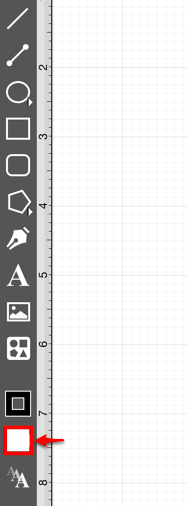

-
Press on the Info Button in the Top Toolbar.

Then tap on the Filloption to open the popover window shown below.
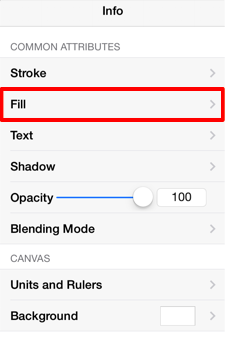
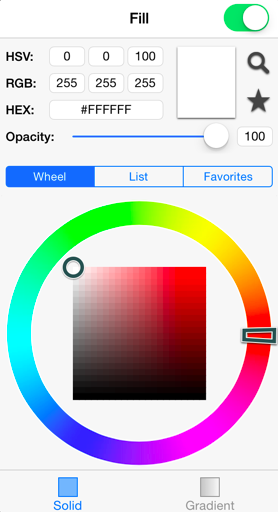
The Fill option must be enabled for a style change to be applied to any currently selected or new figures. Tap on the On/Off toggle slider in the upper right hand corner of the Fill Window to enable this option. The slider will appear with a green background when this option is enabled.
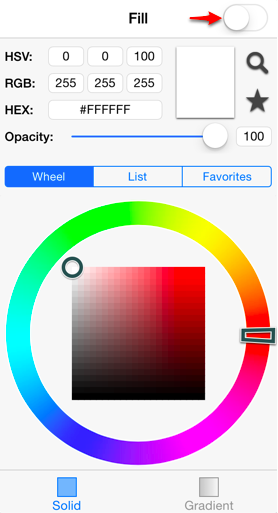
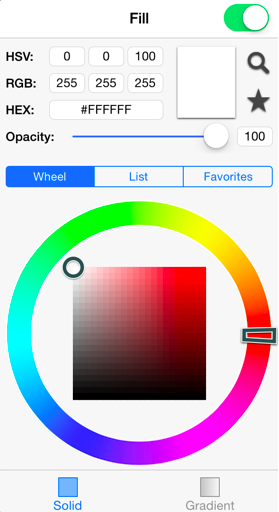
To change the Fill Type to Linear Gradient:
-
Press on the Gradient Button at the bottom of the Fill Window (if not already selected).

-
The Fill Window will expand, as shown below.
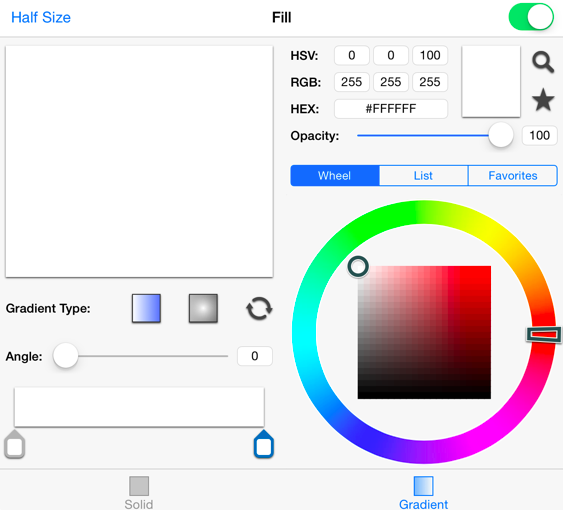
-
The expanded Fill Window automatically defaults to a Linear Gradient Type unless another option has previously been chosen.
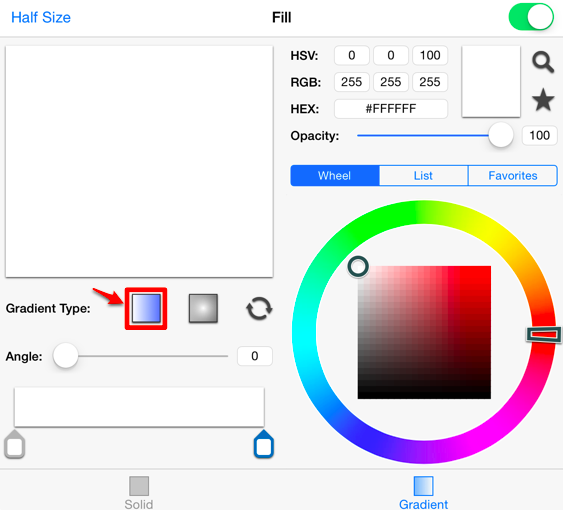
-
Next, press on the desired color selection method (Wheel, List, or Favorites). In this example, the wheel is chosen.

-
Tap on a color range within the outside of the wheel view.
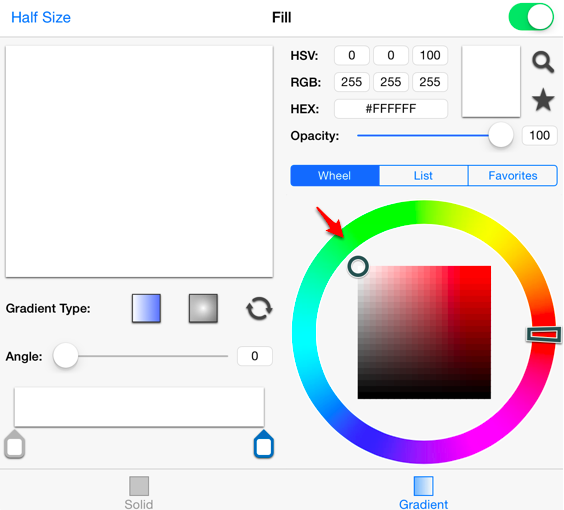
-
Tap on the desired lightness or darkness of the selected color in the center (saturation) square.
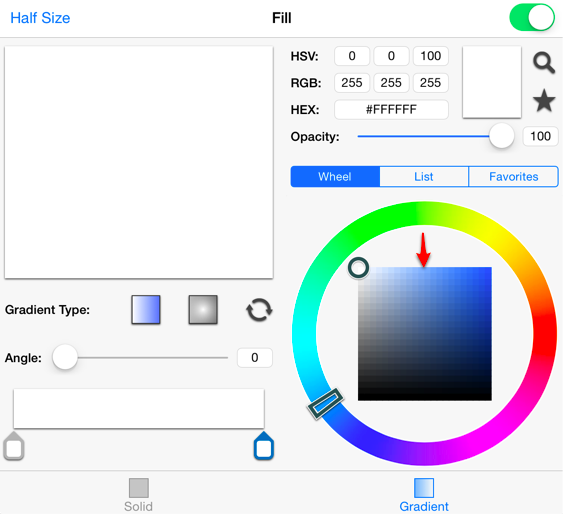
-
Perform a Touch/Drag gesture combination or Press on any additional options (angle, opacity, etc.) within the popover window to make further attribute changes.
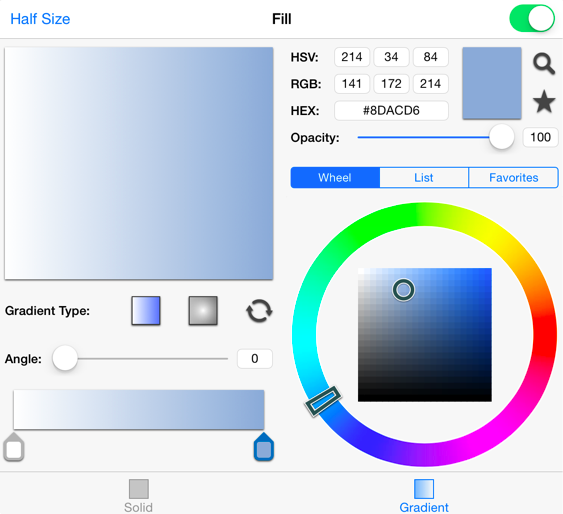
-
Tap anywhere within the Drawing Editor to close the window. The following example shows a rectangle with the Fill Style set to linear gradient and Color set to blue:
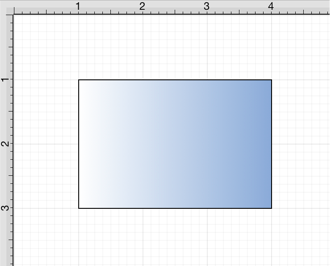
Working with Linear Gradients
The angle and gradient handles located in the bottom right corner of the Fill Window can be used to insert multiple colors at varying angles within a figure. Perform a Touch/Drag gesture combination to move a gradient handle to a different position on the slider. Tap on the slider to add another gradient handle for additional color variations.

More than one color can be added by setting each individual gradient handle to one of the desired colors. Tap anywhere within the Drawing Editor to close the window. The following example shows a rectangle with the Fill Style set to linear gradient and these colors: white, blue, and green:
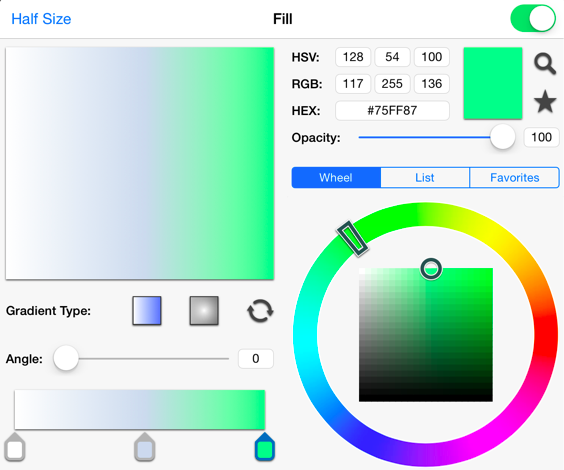
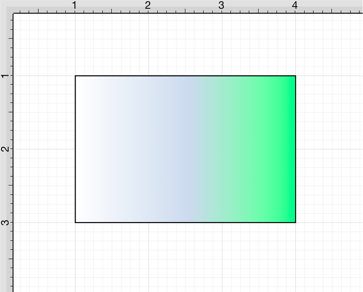
Angle
Use a Touch/Drag gesture combination to move the Angle Slider to a desired value or type in a value by tapping on the field located to the right of the slider.
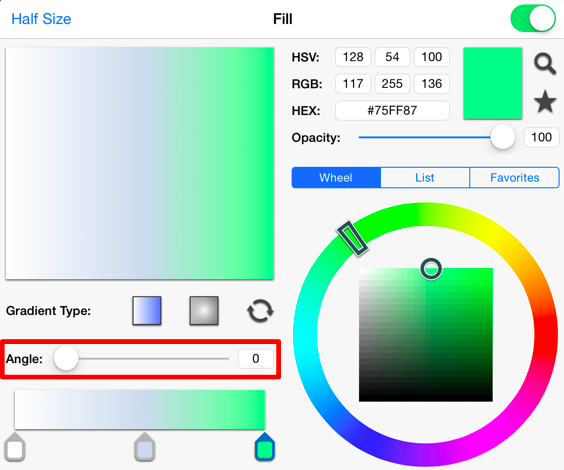
In the example below, a value of 75 has been entered for the angle.
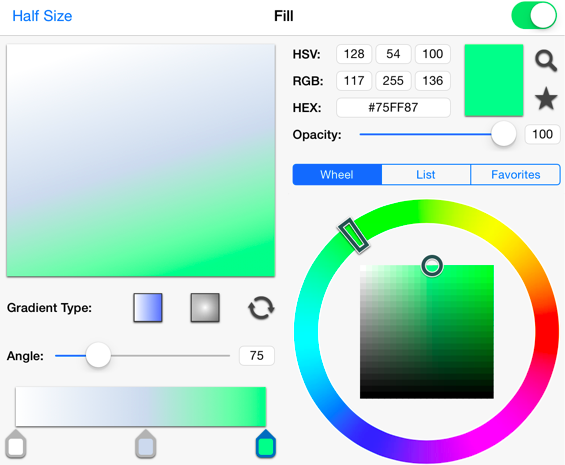
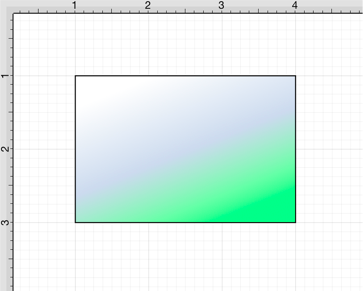
Using the Gradient Locations Option
You may also enable the Gradient Locations option to view the handles for adjusting the angle and color progression attributes of a figure within the Drawing Canvas. To do so, tap on the Settings Button in the Top Toolbar and then tap on the Handles Submenu.

The Gradient Locations option resides in the Handles Submenu as shown below. It will have a gray background when disabled. To enable this option, tap on the On/Off toggle slider and it will move to the right and change to a green background to show that the option has been enabled.
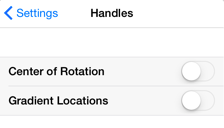
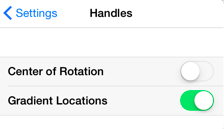
Once this option is enabled, you will see two additional handles on each selected figure. These may be used to adjust the angle and progression of colors for the linear gradient. Below you will see what a figure looks like when this option has not been enabled and then after it is enabled.


The two handles may be moved to any location within or outside of a figure to change the angle or fill pattern. To do so, press and hold on the handle. Then drag the handle in any desired direction without lifting your finger. The left gradient handle is selected in the example below. It is moved upward and to the right within the figure.
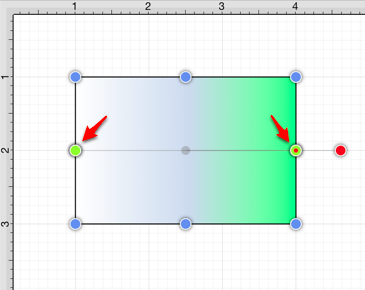
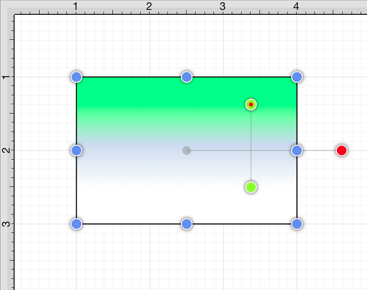
A style change will be seen instantaneously when a figure is selected. If figures have not been selected, the style change will apply to all subsequently created figures.